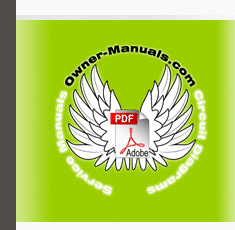|
|
|
Categories
|
|
Information
|
|
Featured Product
|
|
|
 |
|
|
There are currently no product reviews.
 ;
This is a high quality manual with clear schematic and components layout diagrams ; with service procedure included.
 ;
This service manual for the Kenwood KT-990D was reproduced really well ,is very legible and manual is complete.Combined with the low price paid,in the future,I will be checking Owner-Manuals.com any time I need a manual.
 ;
When I purchased this manual I had my doubts regarding the quality as the price was so reasonable as compared to other outlets.
The manual itself is of high standard the print is very clear as are the diagrams. Obviously with the diagrams one has to zoom in otherwise it is to small to be able to read.
Overall I am very pleased with the company who delivered as they said and with the manual they supplied.
I occasionally require a manual and now having registered with this company I shall order from them in the future.
 ;
I was at first dubious about payiong for downloaded manuals but having done so, I was extremely impressed with quality of the two manual I ordered, well worth the small price I paid.
I would highly recommend these to my friends.
 ;
reasonable price for the schematic - the service is perfect, all as expected and pointed by instructions - good scan of the original plans - thank you!
1-4-5. Unloading Method of Cassette in Manual The mechanical deck can not be removed at the condition the cassette is loaded, since one of screws for mounting the mechanism deck with the chassis is located under the cassette. If the cassette can not be unloaded even pressing the (EJECT) button, eject it using the following method. 1. Remove the worm gear holder and the worm gear, and turn the worm wheel (1) to unloading direction shown in Fig. 1-4-5 with a screwdriver etc. 2. When the S, T sliders start unloading, insert a fine driver, etc. into the rectangle hole on the bottom chassis as shown in Fig. 1-4-6 noting that no grease is attached to the tape due to tape slack. Then, turn the worm wheel to wind the tape by turning the pulley (3) of the clutch gear assembly in the arrow direction seeing the mechanical deck from the bottom. Notes: � The operation shown in Fig. 1-4-6 should be done with the unit stood up vertically. � When a cassette is not ejected by turning the worm wheel (1) due to a mechanical operation stop, cut the cassette holding portion shown in Fig. 1-4-7 to eject the tape.
1-4-6. Check Method of Each Operation Mode without Loading the Cassette 1. Put some tapes on both left and right sides of the cassette holder so that the start/end sensors are not affected by the light. (Fig. 1-4-7) 2. Press the channel up/down keys on the main unit simultaneously for not less than 5 seconds, in succession within 2 seconds after pressing channel up/down keys, press the rewind key of the remote controller. 3. Release both lock levers of the cassette holder to slot in. 4. When a cassette goes down, the rotation speed of the S reel table becomes fast. In this case, if the rotation is stopped, the mechanism starts loading the cassette. (If not stopped, the cassette is ejected.) 5. After loading is carried out, turn the opposite reel table toward the rotating reel table by hand. 6. In this status, the operations in each mode are allowed to carry out.
Cassette holding portion Attach adhesive tape.
Cassette holding portion
FL cam gear (2) Worm wheel (1)
Attach adhesive tape
Fig. 1-4-7 Note: � In PLAY or FF/REW mode, the auto eject will be actuated or the power will be turned off if the reel pulse, which is generated by turning the rotating side and opposite side reel tables manually, is not sent. � Once ejection is actuated, the procedure so far is cleared, therefore when carrying out check again, perform the procedure from the beginning. � When checking a torque cassette, perform the identical procedure. � When a tape, guide and capstan are stained with grease, even if a tape is a normal type, its cassette type could not be distinguished, and it could not shift from CUE and REV mode and could not be forwarded and rewound.
Fig. 1-4-5
Front
Pulley (3) Rear View seeing from bottom side.
Fig. 1-4-6
|
|
 |
> |
|
